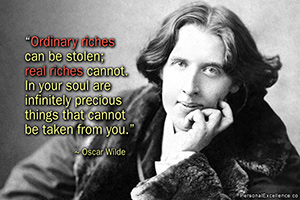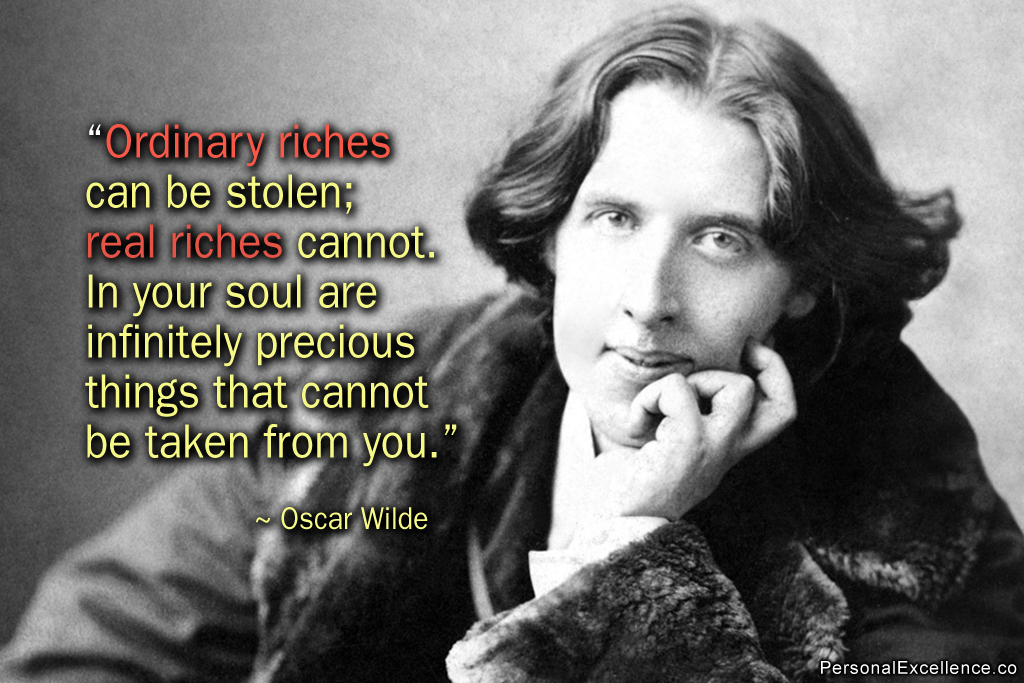
What is your routine like for each week? What do you do during your weekdays? What do you do during your weekends? Is your weekly routine empowering you?
Purpose of a Routine
A routine is a set of activities that you repeat every day, week, or month. By having a set of tasks to stick to each day/week/month, it gives your life some element of structure, so that you don’t wake up every day wondering what to do. In that sense, routines simplify life and give you predictability.
Contrary to popular belief, the objective of a routine isn’t to keep things constant. Quite the opposite, in fact.
The objective of a routine is progress — to help you get the best out of daily life, just by following it. We do this in two ways: Firstly, by having a reliable set of tasks to do every day or week, you don’t have to waste time planning what to do every day/week. You can just stick to your schedule and focus on getting things done. Secondly, by creating a routine filled with empowering activities, you automatically progress in your goals just by following it.
Powerful Routines vs. Stagnating Routines
The mark of a powerful routine is one that helps you make headway in your goals just by sticking to it. This means even if you go auto-pilot for a month, without planning and simply focusing on what you have planned in your schedule, you’ll be significantly closer to realizing your dreams than a month ago.
On the other hand, a poor routine is one that stagnates you, or even sets you back. Just following it doesn’t bring you anywhere other than remaining status quo. You may even feel drained, negative, and unhappy at the end of the day, even after you complete your routine to a tee. This calls for a major change.
Most people today have disempowering routines. Their weekly schedules are filled with empty tasks that keep them busy, not productive. For example, random web surfing. Watching long hours of TV. Working in a disempowering job. Spending significant time to work around bad habits, such as eating unhealthily, feeling bad about it, and then exercising and eating less to remove the extra calorie intake, and repeating the cycle the next day. Entertaining poor thought patterns — worrying and feeding energy to fears rather than taking action. Meeting up with people who drain them. Spending too much time on parasitic relationships. Idling away.
Continuing in this cycle will only lead to increased unhappiness. Eventually their souls will wither, and their fire gets extinguished.
When It’s Time To Change Your Routine
How do you know when it’s time to change your routine? Here are some signs:
- You’re constantly wondering what you should do with your time
- You often feel uninspired, like you’re in a rut
- You feel busy but you don’t know what you’ve accomplished at the end of the week
- You feel a lack of satisfaction / fulfillment with yourself/life
- You feel you need to consciously monitor your goals to see how they’re doing – You can’t rely on your routine to achieve them
- Your daily activities are more of a chore/obligation than an inspiration
- Your daily activities are not what you’d want to do if you have your way with life
- You feel tired easily even though you’ve not done much in tangible terms
Fact #1: Powerful Routines Bridge Gaps Between Vision and Reality
In 30DLBL as well as my coaching sessions with clients, we work on a lot of high level tasks that get you thinking about your life, such as working out your life’s vision, your long-term goals and dreams, your bucket list, and personal values. These are important, fundamental questions that get us kick-started on living a life of our highest potential.
Beyond the introspection and revelations one gets when working through these tasks, these long-term visions need to be followed up with due action plans, so they get transformed from vision to reality. Your routine is what bridges the gaps between your life vision, your long-term goals, your action plans, and your daily life. If you have powerful goals that move your soul, but you have a lackluster routine that drains you every day, then clearly there’s a mismatch there. You can keep dreaming and envisioning a better future, but until you create an empowering routine, your vision can only remain a vision.
It’s like trying to drive a car with no wheels. No matter how much fuel you have in the tank, the car can’t move without fixing in the proper tires first. Your routine represent the tires that will bring you from vision to reality.
Fact #2: Powerful Routines Help You Progress in Your Goals Just By Sticking To Them
If your routine is in alignment with your life goals, just following the routine each week will help you achieve great progress in your goals and dreams. You don’t need to invest additional energy to think about your long-term goals outside of your weekly tasks, because everything is congruent with one another.
Fact #3: Powerful Routines Empower You
Have you ever been very busy, filled with tons of activities to do in a week, yet you seem to have boundless energy? And at the same time, you can have a week where you don’t have much to do, but that doesn’t make you more energetic. You sleep and rest the whole day long, but you still feel tired at the end of the day.
That’s because no 2 activities are equal. Some activities have an energizing effect – they connect with your inner values, hence releasing new bursts of energy when you participate in them. Despite investing time and effort, you become even more empowered after doing them. Some activities have a draining effect – they take away your energy, leaving you more tired.
When I’m engaged in a powerful routine, I feel awake and energized all week long, despite sleeping only a few hours each day. I don’t feel tired either. I can keep going and going endlessly, from one activity to the next, without stopping. That’s because each activity leaves me more powered up than before. For example, when I conduct workshops and seminars, I get very hyped up. When I’m working with a strong audience with high consciousness individuals, we thrive off each other’s positive energy, and at the end of the class, everyone is extremely energized and charged up. Likewise, whenever I run 30DLBL with high consciousness individuals who actively participate and share, the challenge generates a positive ripple effect to everyone else taking part.
On the other hand, I’ve been in stagnating routines where I’m tired all the time despite not doing anything for the week. I can sleep 10–12 hours every day, and still feel tired after all that sleep. Activities in the week include meeting people who drain my energy, eating lousy, unhealthy food, engaging in passive activities such as watching movies, and overall not doing anything at all. Needless to say, such routines leave me feeling worse about myself, which perpetuate itself unless I intervene quickly.
While I’m not saying that you should sleep only 4–5 hours a day every day (I don’t think it’s sustainable), my point here is that it isn’t so much about the number of hours you sleep but the activities you do in the day. By strategically engaging in empowering activities, and eliminating activities that drain you, you ride on a positive, upward spiral that builds upon itself. You are more energized and well-rested than when days when you are do nothing and sleep 10 hours each day.
The best way to know is to experiment — try out different activities and notice how you feel before/after each activity. Like I said, some activities energize; some activities drain. Engaging in a series of energizing activities will leave you with more energy to do more, while engaging in a series of draining activities will suck you dry for the day. Whether an activity energizes or drains you depends on your values and goals and how that activity supports them.
Activities that empower me include:
- Connecting with good friends
- Making new friends
- Talking with high consciousness individuals
- Creating life changing content
- Enabling others to achieve their highest potential
- Improving others’ lives
- Making a difference in this world
- Taking action
- Achieving results in my goals
- Decluttering
- Seeing people achieve success in their goals
- Witnessing others experience happiness
- Eating healthily
- Building authentic connections
- Constructive networking
- Growing my business
Activities that drain me include:
- Watching TV
- Doing nothing
- Sleeping (more than necessary)
- Dealing with low consciousness individuals (energy vampires, critical people, rude people, self-help junkies who don’t do anything about their lives, people who talk a lot but never take action)
- Entertaining fears (whether mine or others’ fears)
- Having my time wasted
- Being preached at
- Having to attend to things I’m not interested in
- Being caught in repetitive, non-growth situations
- And so on
Fact #4: We Need To Constantly Upgrade Our Routines
It’s possible that you have a routine that empowers you initially, but no longer has the same effect after a while. For example, when I first started PE, I created a new weekly routine where I would (a) read up on how to write powerful content and build a top blog (b) write new articles (c) promote the articles on social media sites. The routine was very fruitful at the beginning. It helped me quickly gain the skills I need to create a top blog.
However after a few months, the routine normalized itself. As I became more knowledgeable on how to write strong content and build a good blog, reading articles on blogging was no longer fruitful as many were rehashes of the same tips/information. Also, since more people knew about PE, I found it was more rewarding to to focus on content creation than marketing. The routine had served its purpose and was no longer as helpful. It was then time to shake up my routine and change a new one – one that empowers me to achieve my goals and dreams more quickly.
Since we grow and evolve all the time, we will outgrow our routines too. No one routine can last forever. It’s a matter of creating routines that fit our values, needs and long-term goals at every point in time. To stick to one same routine for the rest of our life is to stifle our existence.
How to Create an Empowering Routine
Changing a routine isn’t easy. Because of the self-perpetuating nature of routines, it can be hard to break out of them. I’ve some tips that can help you break out of a bad routine, but you have to first satisfy the 2 pre-requisites:
First off, you have to be conscious enough to realize your routine is not serving you as well as it should. It takes courage to recognize that your life isn’t going the way you want, and admit that your routine isn’t serving you. Sadly, most people will never get to this point of realization in their lives. They are too busy looking outward and blaming the world than introspecting on what they should do/change about themselves. They are too busy living in self-denial and convincing themselves that they love their life the way it is.
Secondly, you have to want to change. Believe it or not, some people keep complaining about their life, but yet they refuse to change their actions. For example, someone who wants to make new friends, yet refuses to meet new people outside of his/his circle of friends. Or someone who wants to lose weight, but refuses to change his/her poor eating habits nor start exercising. Change will never happen for such people unless they recognize they need to first be the agents of change.
So assuming you do realize your routine is not serving you, and you do want to change your routine for the better, how can you do that? In the past few years, I’ve adopted many new routines that support me in my long-term goals, such as healthy eating, weight loss, pursuing my dreams, creating a sustainable business from scratch, and so on. Here, I’ll share with you 5 key steps to successfully switch from nonconstructive, stagnant routines to empowering ones:
Step 1: Identify the disempowering routine
First off, identify the routine that’s draining your energy. What’s causing you to stagnate in your life / goals currently?
In my past reviews, I found that my emotional eating has been an extremely disempowering routine. I spent a good deal of energy every week planning my healthy eating and exercise routine, which would get thwarted after 1-2 days by emotional eating. I would then beat myself over that, eating more just to punish myself, then telling myself that I would start everything on a clean slate the next day. This would loop again after a few days.
This was a colossal waste of energy and time, because I spent a lot of time and energy anguishing over the same problem each week. I was sick of repeating the same cycle all these years and making no progress each time. If anything, I felt worse and worse about myself each time. Clearly, this was a routine that needed to be addressed. I would eventually do so via my water fasting experiment, which I elaborate below in Step 2.
Besides emotional eating, there are many other disempowering routines as well. These include being late, oversleeping, not meeting deadlines, getting into relationships with the wrong person, giving up halfway, being absent-minded, and many more.
Step 2: Drop the disempowering routine completely
The fastest and most immediate way is to drop the current routine completely. Routines are self-perpetuating. Every action leads to an outcome, which encourages you to continue your actions, which reinforces the outcome. When you stop feeding the loop, the loop will stop enforcing itself. It’ll hence break off by default.
Examples where you drop existing routines: Going on a retreat (e.g. Vipassana), taking a vacation, dropping negative friendships, quitting a job, stopping a diet, fasting, etc. The longer the current routine is stopped, the easier to effect the new change after that.
Cutting off the routine altogether may seem like a drastic action, and it is. You don’t have to cut off an old routine completely just to create a new routine, though it is the most direct method that gives the fastest results. It’s especially true if (a) your past routine has not been serving you at all (b) your past routine has been deeply set and is hard to break off (c) you’ve not had any success breaking off your past routine via other methods. That’s why cutting off the old routine has consistently been my favorite method to create empowering changes in life.
Example: Fasting
As part of my plan to reestablish a healthy relationship with food, I did a 21-day fasting experiment, where I didn’t eat anything at all during the period and drank only water. As I wrote in detail in my post-fast review, the fast was extremely helpful in that it allowed me to take a long break from eating for 21 days, and in the process enabled me to take a cold, hard look at my relationship with food.
By not eating and feeding myself in the 21 days, I was able to achieve an unprecedented level of consciousness, objectivity and clarity regarding eating and food. This helped me to clear a lot of my deep-seated issues with food and eating, and proved to be extremely crucial in reestablishing a healthy relationship with food. It’s now almost 2 weeks post-fast, and I’m doing extremely well with healthy eating. I now naturally gravitate towards healthy, raw fruits and vegetables, without even trying to do so. I eat when I need to and I stop as and when I want. Because of that, I’ve also maintained my weight post-fast.
All this is possible because I took a deep dive with the 21-day fast and took the opportunity to completely unroot my past issues with food. If I had eaten during the fast, or taken on a shorter fast of 7 days or 14 days, I seriously doubt I’d have achieved such results post-fast.
Example: Quitting my day job
Another example where I completely cut off a disempowering routine was when I quit my day job in 2008. At that time I was eager to get started on my passion, but my day job, with the heavy workload, frequent traveling and day-to-day responsibilities, made it impossible for me to make big headway in my dreams. So rather than get tangled in a mess of trying to start something new on top of a complicated schedule, I decided to quit the job completely.
By not having to deal with an existing job, suddenly all my time and mental resources were freed up to focus on my personal development business 110%. With a clean and empty schedule, I could then create a brand new routine to succeed in my passion. I was easily spending 12 hours each day working on my business alone. This enabled me to achieve results in my new path significantly faster. This could never have been possible if I was still employed.
Some people may rebutt with all sorts of reasons why they can’t quit, and really it’s your call. I evaluated my situation in-depth and chose to quit because the pros of the decision clearly outweighed the cons in the long run. Sure, there are the standard concerns like no income, etc, but those aren’t insurmountable concerns – it’s a matter of how you manage the situation.
I’m not saying everyone should quit their job if they want to start in a new business/venture. It depends on your current situation and what is the best path to get there. It’s perfectly possible that staying on your current job and taking time out while you’re free to work on your new business might well be the best option for you.
If that’s the case and you choose to remain in your current job, then remember that you’re choosing to accept the benefits that come with being employed, as well as its downsides. It’s then up to you to find a way to make things work out. For example, since you’re employed, time would be a limited commodity while money isn’t. You can use the money to outsource the work for your new business. Either way your WHAT – i.e. the decision to pursue your long-term goal – will never change. The only question is the HOW – how you want to pursue it.
Dealing with Deeply Embedded Routines
It can be tricky to drop disempowering routines that are deeply embedded, such as emotional eating, being in unhealthy relationships, negative thought patterns, etc. Such patterns have been enforced by many subconscious beliefs, which then requires a deep-dive into the root cause in order to effectively stop it.
Step 3: Create a new empowering routine
Having cleared your old routine, create a new routine that supports you in your life goals. For example, after clearing my old routine of bad eating habits during the fast, I created a new healthy eating routine (as I wrote in detail in my fasting review). It was easy to stick to this new routine post-fast, because I had already cleared out all my baggage with my old routine during the fast. All I have to do is to stick to plan the first week, and the positive benefits of doing so automatically reinforces the routine the second week, and week after, and so on.
Here’s an example of an empowering routine that supports one’s growth journey:
- Read personal development blogs (such as PE)
- Spend 30 minutes a day working on life handbook – include life goals and planning
- Participate in online forums (such as PE Forums) with growth-oriented individuals
- Weekly review of personal goals and status of goals
- Life coaching sessions – My clients typically set up weekly or monthly coaching sessions with me, where we work on their life goals and higher level aspects of their life during the sessions. Despite it being just a 1-hour session, the effects of each discussion are powerful and extend well beyond the hour. It sets them on a positive, upward momentum where they create new results in their life and build upon that week after week.
- Participating in 30DLBL Challenge Runs (conducted 2-3 times/year) – 30DLBL is a 30-day life changing personal development program that I personally created to jump-start one’s growth in life. There have been 2 runs to date, with the third run scheduled sometime next month. By having a regular cycle for this program, it serves as a checkpoint for the 30DLBL members and helps them to remain accountable to their life goals.
You can also create an empowering routine around specific goals. If you want to be a full-time writer, your empowering routine can include:
- Read blogs and books on writing
- Write X words a day / Spend X time a day on your first novel
- Attend meet-up groups and events for writers
- Participate in online forums for writers
- Network with publishers and literary agents
- Attend writing courses
Doing all 6 together in a week may seem like an overkill, so pick the ones that are most relevant for you. These 6 activities above apply for all other goals too. For example, if you want to be a culinary chef, you have #1) Read blogs and books on cooking, #2) Create X recipes a day, and so on and so forth. Same if you want to be a dancing instructor, or an artist, or singer.
Step 4: Kick off the week – Do a trial run
Now that you have created your empowering routine, schedule them into your calendar. This may be Google Calendar, MS Outlook, Lotus Notes, depending on the system you use.
Do a trial run of this routine in the first week, and see how the routine works out. Assess your energy level before/after each activity. Empowering activities are the ones that excite you and leave you energized; Draining activities are the ones that wear you out after doing them.
If you’ve selected the right mix of activities, you should feel more energized despite being busier than before. Somehow you need lesser sleep, and you’re more alert than usual. Suddenly you’ll realize how overrated sleep really is.
Step 5: Tweak and improve
Remove the activities that drain you. Add activities that empower you. Keep tweaking until you identify the optimal mix of activities that bring the best results out of you each week. This requires constant experimentation.
I found from experience that concentrating on just 1 activity the whole week doesn’t work so well, because there’s a wear out factor. (See Habit 2 of 8 Habits of Highly Productive People) A well-rounded set of activities that match your values and aspirations works the best. For example, in the past I tried a routine where I did nothing but write articles all week long. It got quite draining after the first few days. I later realized that 1-1 connection with people is important in my life, and scheduling 2-3 meet-ups a week with good friends, high consciousness individuals and business associates has the effect of increasing my energy level. So I added that in ever since. My weekly routine now includes a mix of writing, building the blog, planning, 1-1 coaching, speaking, and social meet-ups.
Keep a lookout for the times when you feel energized, and times when you don’t. Through continually tweaking your schedule, you’ll be able to work out with your best, most empowering routine that supports your goals and dreams.
(Image: Girl with balloons)









 Thanks for reading. If you like my free articles, join my private email list and get my latest updates and articles sent right to your inbox.
Thanks for reading. If you like my free articles, join my private email list and get my latest updates and articles sent right to your inbox.